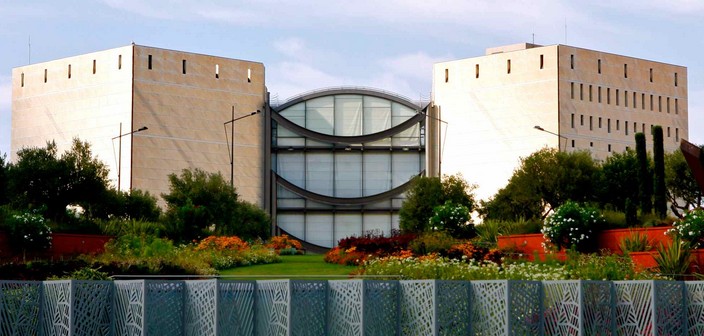The museum of modern and contemporary art celebrates its 25th anniversary. On this occasion and to properly mark this anniversary, the M.A.M.A.C has brought out 200 works from its reserves that have rarely, if ever, been exhibited. The public will be able to admire them until May 10, 2015.
COLLECTOR will take us on a journey to discover art from the ’60s to today.
Pop art, minimalism, conceptual art, or supports-surfaces, all these themes and artistic movements will be unveiled during our visit. Yves Klein and Nikki de Saint Phalle, iconic figures, will be the highlights of the visit. One is famous for her ‘Nanas’, and the other for that blue which marries the sky and the sea, both recognized by the general public.
Pop art and its criticism of consumer society show us oversized objects, a caricature of consumerism. Minimalist artists reduce artistic representation to its essence, offering a stripped-down vision of feelings and emotion, a raw art! The ’70s group focuses primarily on the components of a painting: canvas, frame, pigments, and subjects.
Thus, the painting is liberated from spatial constraints and seems to extend beyond the canvas. This decomposition of the work, its meticulous and precise analysis, provides another approach to the canvas. The new realists integrate the object into the work or the work into the object, through collage and assembly of recovered materials, often heterogeneous objects from the urban or industrial daily life. Nothing is lost, everything is regenerated, could be their phrase.
The works of art with Yves Klein include sculptures, paintings, and ephemeral works that survive only through films and photos.
Niki de Saint Phalle’s brush is a rifle! Ben will never stop, just like life, he is eternal. Here we are with the school of Nice and Fluxus. Integrating art into daily life. Some artists from this school, let us understand the word school here in its sense: a current of thought, reject academicism and are mostly unclassifiable. Sosno, Arman, and his Tulip!
We have seen him destroy a living room, dynamite a car, art or provocation? We’ll go even further with Pinoncelli, who does not hesitate to vandalize Duchamp’s fountains, albeit replicas. If Faust sold his soul to the devil, Pinoncelli sold his for 1 franc to Ben.
Chrysalide, we do not hesitate to quote this phrase by Jean-Paul Sartre: “A life is made of the future, just as bodies are made of emptiness.” A contradictory phrase, unless the philosopher considers life as being external to the body. The body fractures, is molded and decomposed, it appears quite alone, empty, as if something were missing.
The dress made of blue plastic bottles might be akin to the new realists. In fact, these artists interlock with one another. The body, death, the after or the non-after, here it is a question of Faith, and even an atheist by proclaiming that there is nothing after, defines this after, which thus exists.
We talked about philosophy, and thus we come to the end of our visit with the Japanese On Kawara. The latter mixes graphic and pictorial elements, creating a new writing. But isn’t a letter, in the end, a drawing? And a text, a series of drawings?
Anne de Staël gives us the answer: “Composing is about exposing a unique thing.” The painting Composition, by Nicolas de Staël, painted in Nice in 1943, a beautiful conclusion for a unique exhibition.
Thierry Jan


